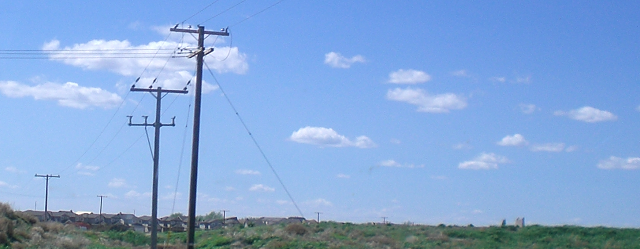Our increasing reliance on natural gas brings with it both opportunities and dangers during the shift towards renewable energy. This issue deals with some major issues regarding natural gas deployment in industry, power generation, food production, and heating.
Tag: Renewable Energy

A renewed look at 2010, a sustainable vision for 2011
Here we review major renewable energy topics from 2010 and then turn towards analyzing energy issues for 2011 and beyond.
Demand side management to help build a renewable power grid
Demand side management helps make our power grid more cost-effective and aids in the transition towards renewable energy. It can also be considered as a very green policy on its own, as it reduces the amount of power we need to produce, and thus our impact on the environment.
Power system performance metrics
Everything has its price. Every form of power production has costs in dollars, time, land, materials, pollutants, greenhouse gas emissions, and human deaths. We look at the most important factors for analyzing the feasibility of a proposed power project. Considering only some of these factors will lead to an incomplete picture of power system costs.
Feed-in tariffs: A fitting policy for renewable energy
Here we talk about what a feed in tariff is and how it works. We also conduct an overview of how effective feed in tariffs have been at stimulating the renewable energy industry around the world.
Interview with wind power guru Paul Gipe
Wind power expert Paul Gipe advocates that we deliberately create our green energy future rather than wait around for it to happen. He says that we should aim to democratize our energy production for a more prosperous future.
The basic realities of fusion reactor design
Issues and difficulties with creating a physical system for nuclear fusion. To succeed, we must face temperatures that vaporize all known materials and other requirements that make this the most difficult technological endeavor of our age.
How can renewables deliver dispatchable power on demand?
What does dispatchable mean? Why is it important? How do we currently do this? Can renewable energy fulfill this role? What other tricks can we use?
Land use of coal vs wind: Still room for debate
Land usage for power systems is a common comparison metric. We demonstrate here that the comparison cannot be conducted meaningfully on such simplistic grounds. Additional factors must be taken into consideration.
The regulatory battle over coal fly ash heats up
The coal industry has had a history of lobbying against a hazardous waste label for fly ash. Fly ash is toxic enough that the EPA mandated decades ago that it be captured and stored rather than emitted into the atmosphere.
Jeffrey Sachs on the high price of ignoring poverty
We can end poverty in two decades. HIV/AIDS has reached a steady state in the world. Military spending is 25 times aid spending. We can achieve peace through shared prosperity.
Misconceptions spreading about the price of solar power
A recent Clean Technica article said that solar power would be cheaper than coal if it received the same subsidies. This is incorrect.
Types of hydroelectric power: How do the dam things work?
Hydroelectricity, or ‘hydro’, is generated from the energy in the water cycle of the earth. The sun evaporates water on the surface of the earth, causing it to rise up to form clouds. Clouds eventually form droplets, which then rain, snow, or hail down to the surface. Water on the surface flows downhill until it evaporates again. During this time it may become trapped in glaciers, lakes, ponds, puddles, or the ocean. Driven by the sun, the water cycle is a truly renewable resource.

Why electrical energy storage is useful
This week we are taking a look at electric energy storage. There are a number of important reasons why energy storage systems are desirable for power grids.
Is nuclear fission power renewable?
The long term supply for nuclear fission fuels on the planet earth is estimated to last several thousand years at current consumption levels, assuming that we adopt reprocessing as well as develop and implement breeder reactors.

Progress and potential of renewable energy
The intent of this publication is an ongoing investigation of the progress and potential of renewable energy in our world. Our goal is to collect the best writing and news on the subject of renewable energy projects and policies. We have observed that humanity is innovating rapidly as the energy security of the future becomes a global priority. Current trends indicate that the age of coal will end before we run out of coal.

Solar power from photovoltaic panels
Photovoltaic solar power is the technical term for solar panels that convert sunlight directly into electricity. This is in contrast to techniques that capture solar energy in other ways, or for different uses. Other techniques include hot water heating, interior temperature control, and concentrated heat for electricity production.

Renewable Energy Review Blog Carnival
Vision of Earth is the host of the newly created renewable energy review. This is a blog carnival attempting to look at the development of renewable energy in the world today. Submitted articles will be judged on their quality, accuracy, and relevance. Once enough high-quality submissions are accumulated for a publication, our editors will write a brief review piece, linking to these novel contributions. We intend to comment meaningfully on the developments in renewable energy in our world.
Reservoir hydro resources on the Canadian prairies
We have been captivated for a long time by the intriguing possibilities inherent in combining Manitoba’s extensive hydro resources with Saskatchewan’s high-quality wind power. A number of other groups in Saskatchewan have been lobbying for greater interconnection between the two power grids to take advantage of the natural synergy that exists between wind power and reservoir-based hydro power.

Publicly Administered Green Energy Futures
Our goal is to keep our physical power infrastructure publicly owned, but gain some of the advantages of the private sector. The key to our recommendation is voluntary public investment from the people of Saskatchewan. In order to stimulate new renewable energy construction, we recommend that SaskPower open up renewable energy projects for direct public investment.
